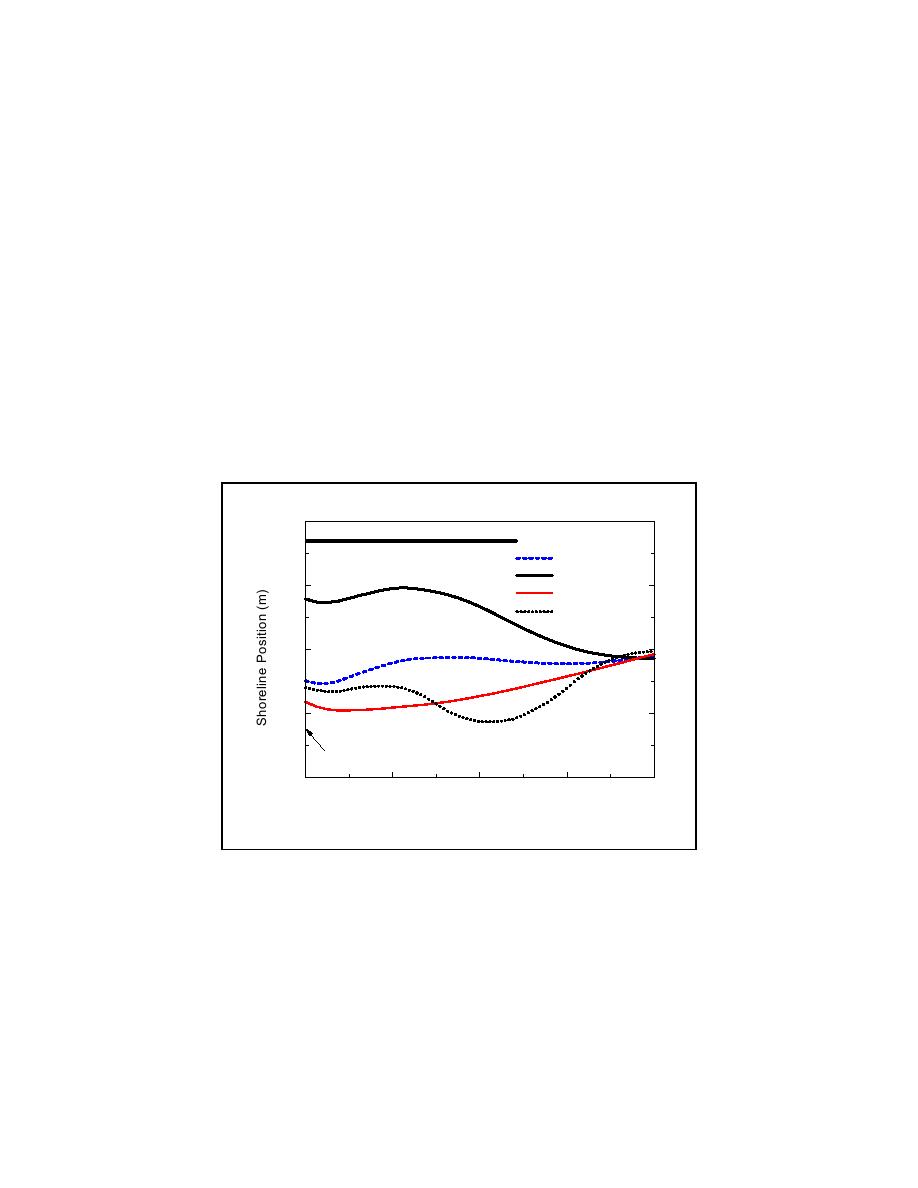
The predicted shorelines, together with the 4-year simulated shoreline without the spur, are
plotted in Figure 10. The difference in the calculated shoreline planforms demonstrates the leading
role of the variable Kt computation. The variable Kt formulation produces four times more shoreline
advance (more than 60 m) behind the spur than predicted with a constant Kt. The primary reason for
the difference is again the sensitivity of the prediction to water level and incident wave height. The
change in Kt versus wave height for constant water level is similar in form to that in Figure 2.
The directionality of the wave climate also plays a role. The Grays Harbor wave climate is
characterized by higher winter waves that approach from the west-southwest and drive sand to the
north, in contrast to the more prevalent smaller summer waves that approach from the west-
northwest and drive sand to the south. The large winter waves tend to erode the beach near the jetty
as they transport sediment northward with no immediate supply possible through bypassing at the
inlet. Waves from the west-northwest transport sand toward the inlet where it is impounded at the
jetty and widens the beach or bypasses the jetty and enters the inlet. The reduced wave heights
predicted by the variable Kt for the large waves reduces the removal of sand and promotes increased
accretion behind the spur. The U.S. Army Engineer District, Seattle is completing a feasibility study
of the spur that includes these results.
1000
Spur
Constant Kt
Variable Kt
950
No Breakwater
Initial Shoreline
900
850
Vertical Exaggeration 4X
North Jetty
800
0
200
400
600
800
Distance Alongshore (m)
Fig. 10. Predicted shoreline, Grays Harbor WA
CONCLUSIONS
Wave transmission at a detached breakwater is a leading parameter among many variables
controlling the response of the shoreline to the structure. Wave transmission depends on the
configuration and composition of the structure, wave height and period, and water depth, and the
forcing parameters are time dependent. Empirical formulas for predicting the response of the
shoreline to detached breakwaters can only crudely account for wave transmission at locations where
the tidal range and wave height, period, and direction vary.
Wamsley et al
9



 Previous Page
Previous Page
